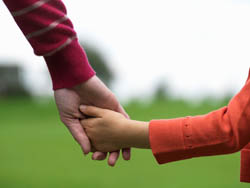The health–environment connection
Air and water pollution are among the major environmental hazards that unnecessarily compromise the health of babies and children. Toxic waste, ultraviolet light, tobacco smoke, water contaminants and harmful allergens are only some of the contaminants that can affect foetal growth and children's development. These phenomena often lead to congenital abnormalities, respiratory diseases, learning disabilities, behavioural problems, low birth weight and even cancer prompting the EU to address this life-threatening and costly reality. The EU-funded project 'Environmental health risks in European birth cohorts' (ENRIECO) analysed exposure response data, methods and tools from birth cohort studies to identify links between exposing agents and health. It aimed to encourage better policymaking in order to improve children's environmental health and reduce related economic and societal costs. To achieve its aims, the project studied 36 birth cohorts in Europe involving 350 000 mother–child pairs. It rigorously examined health data, exposure data and biological samples to build databases and protocols in order to obtain exposure response functions through detailed case studies. Interestingly, among the very comprehensive range of pollution sources, the project included many pollutants whose effects haven't been adequately studied so far. Among these were several biological contaminants, metals, pesticides and emerging contaminants like flame retardants. Other types of rarely studied pollutants such as noise, radiofrequency fields and different radiation effects were also considered. Against this backdrop, the project team investigated health outcomes related to pregnancy, cancer, childhood allergies and asthma, as well as neurobehavioural and cognitive function. Also examined were outcomes related to child growth, in addition to metabolic and endocrine disorders. ENRIECO then conducted a detailed evaluation of environmental exposure and exposure assessment methods in the birth cohorts. Key factors included in the studies were occupation of the mother and exposure period, with particular focus on occupational hazards. Overall, the project collected in-depth environment and health information in birth cohorts, building a centralised online database with environmental exposure–response functions for various health outcomes (http://www.birthcohortsenrieco.net/(opens in new window)). All the information has been rigorously evaluated and disseminated to stakeholders through workshops, press releases and various tools that will facilitate the work of academics, public health departments and policymakers across Europe. The ENRIECO project has been the first initiative of its kind to make this information publicly available along with recommendations to address its findings.







